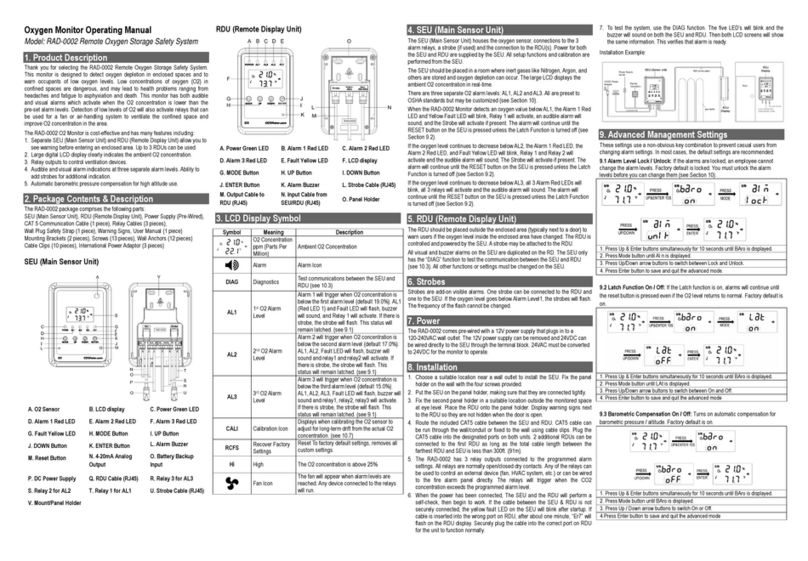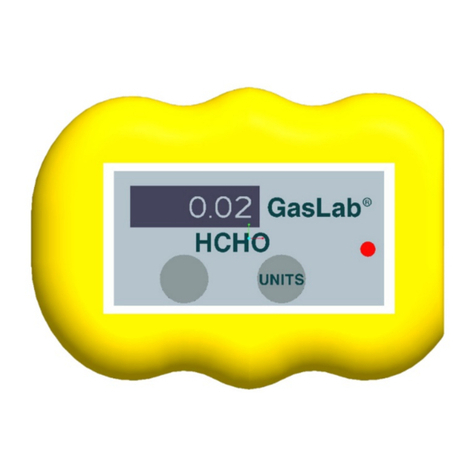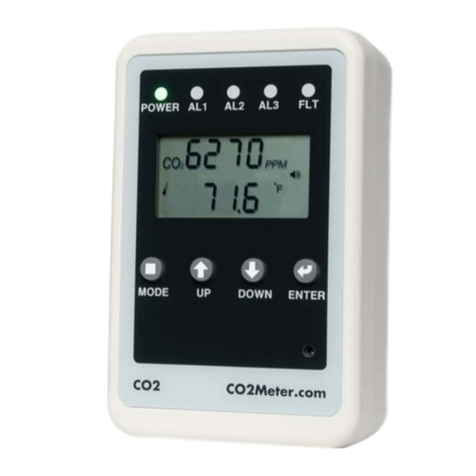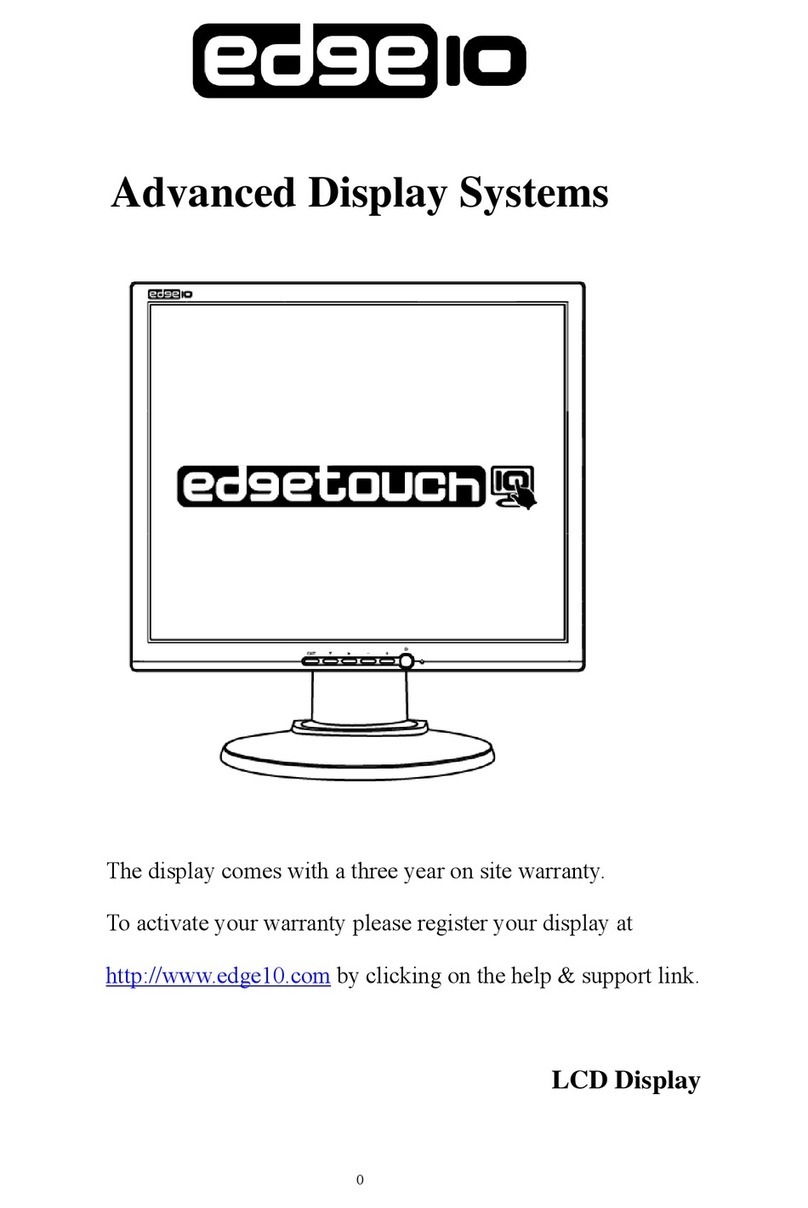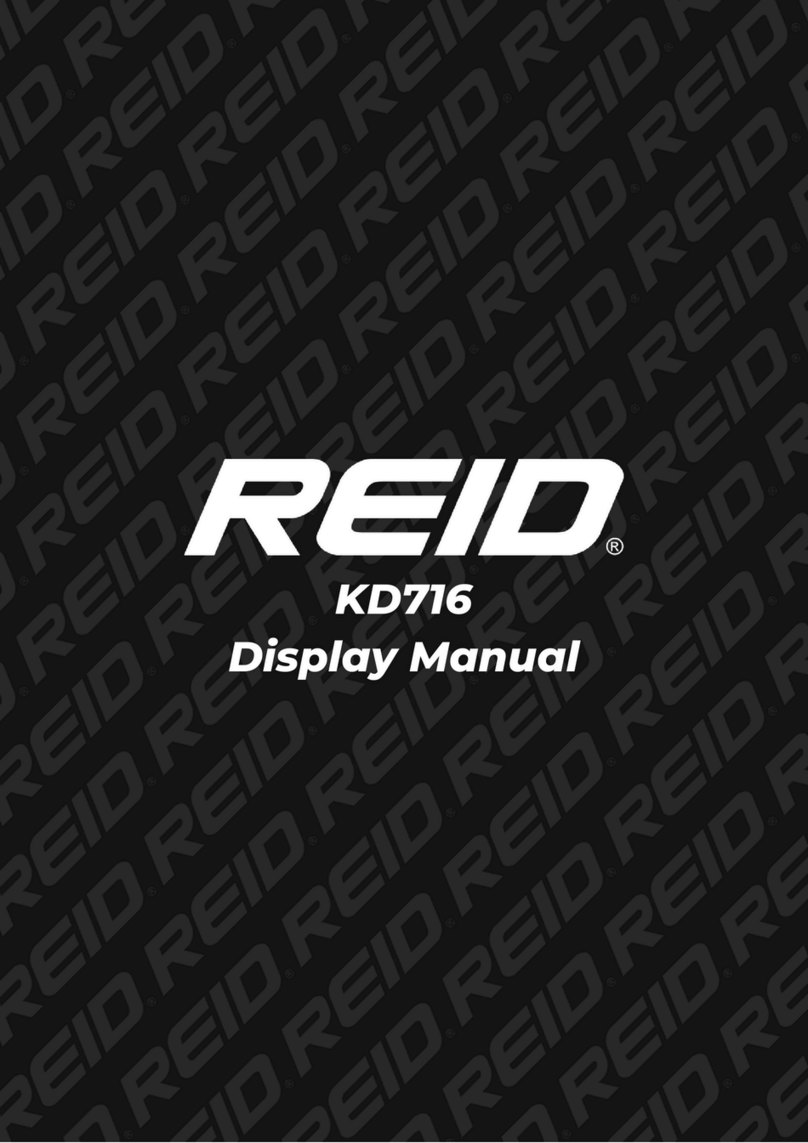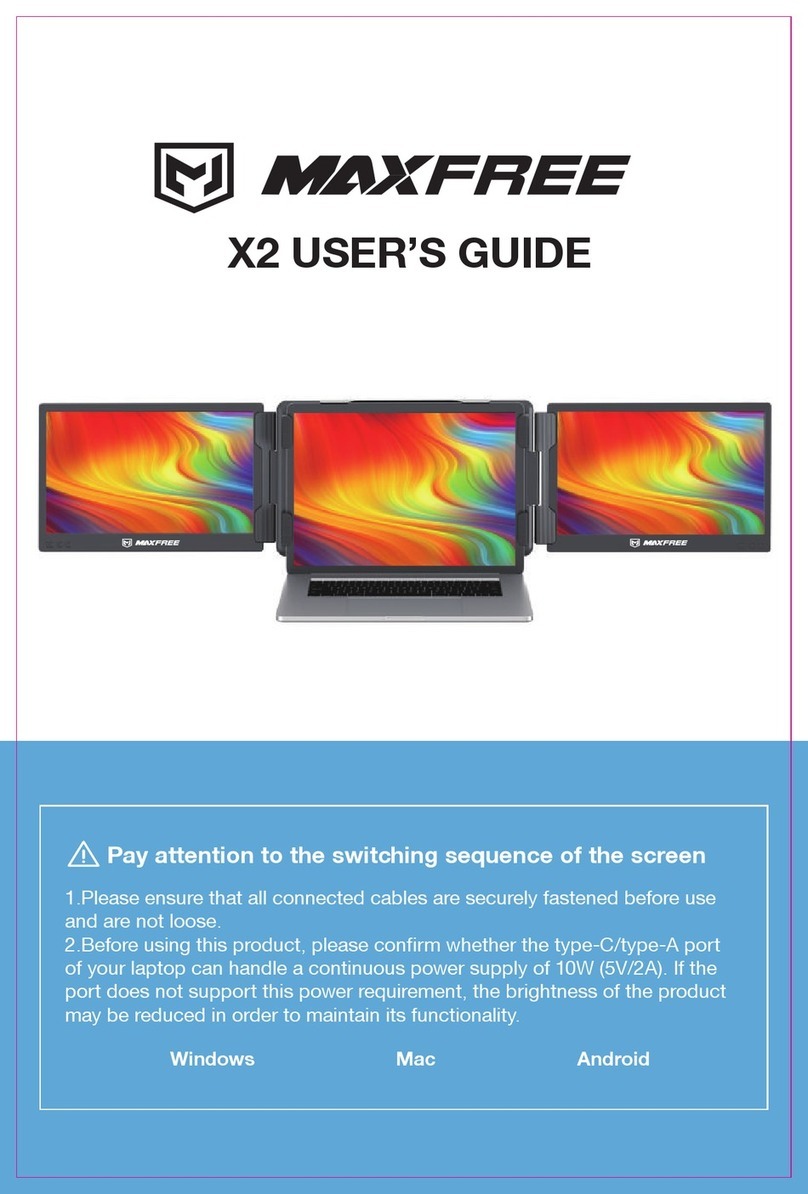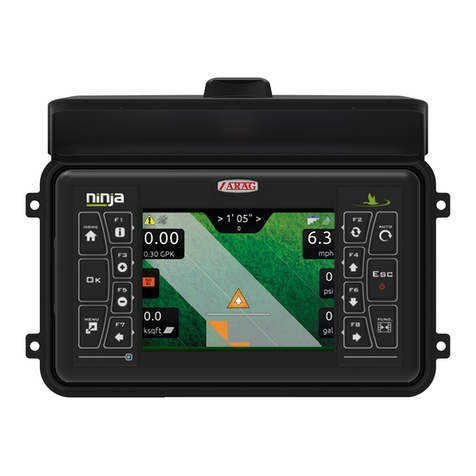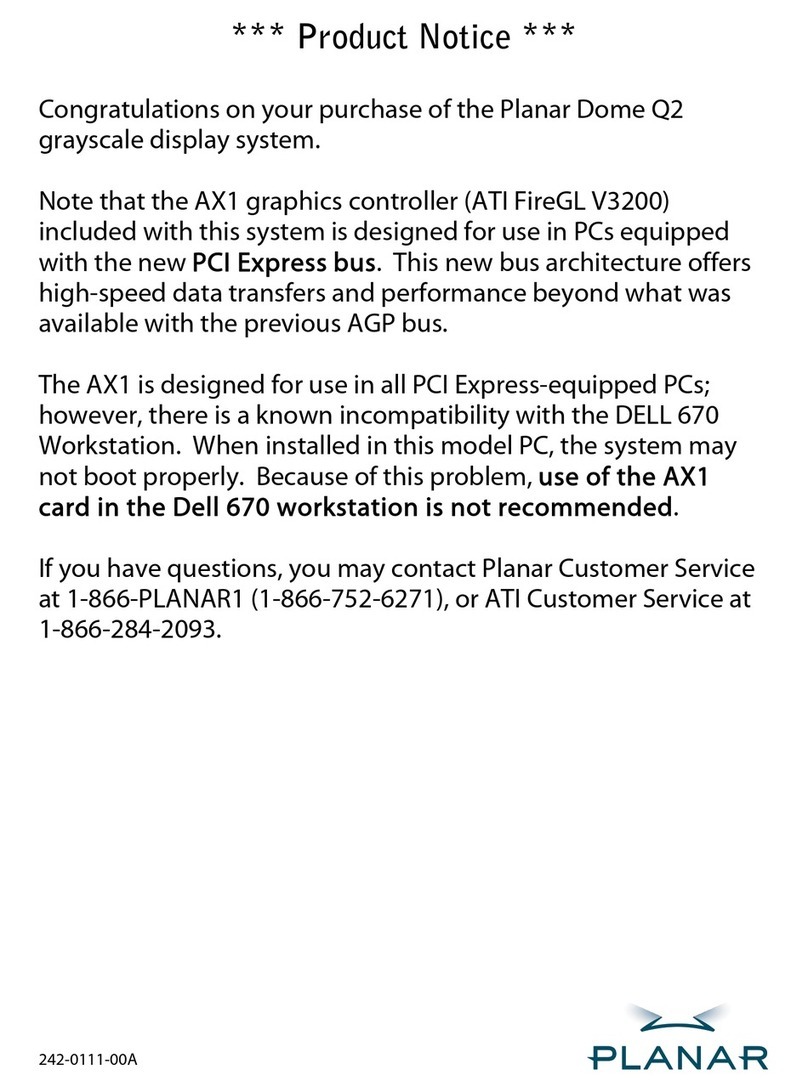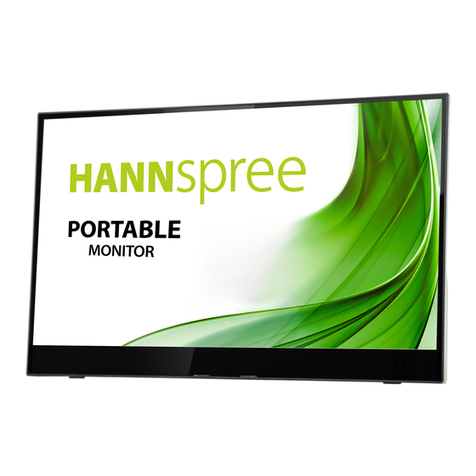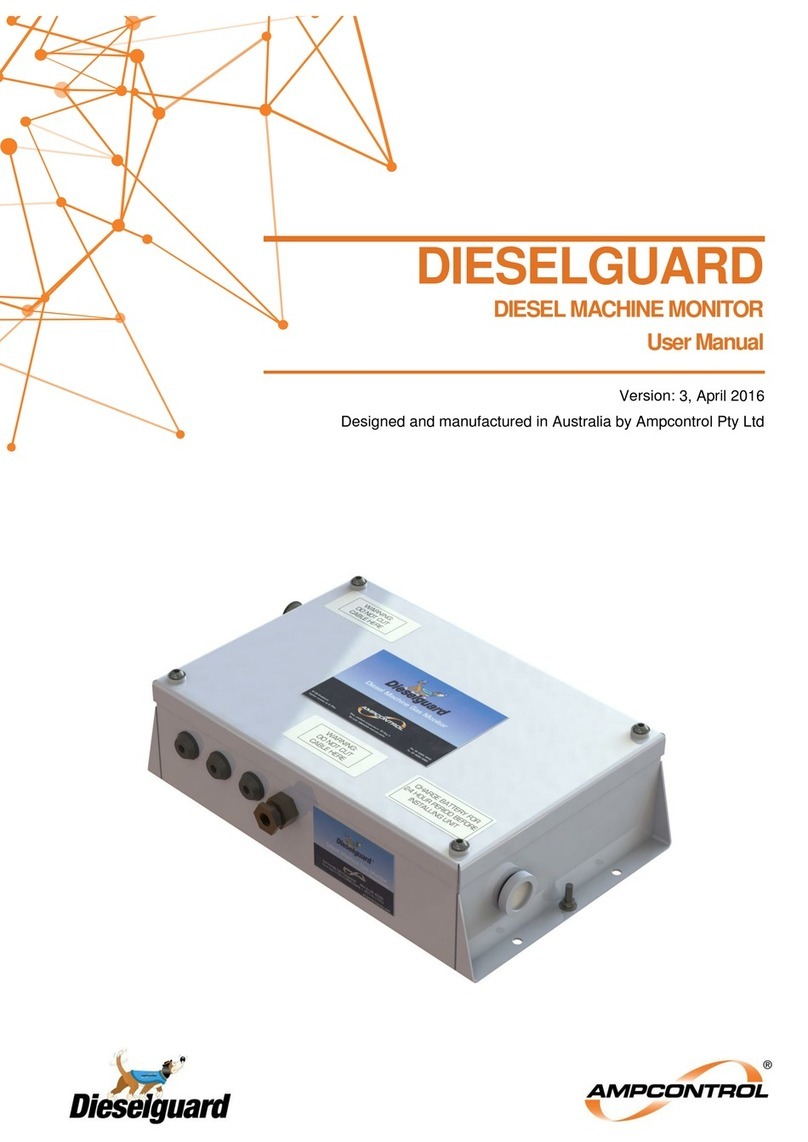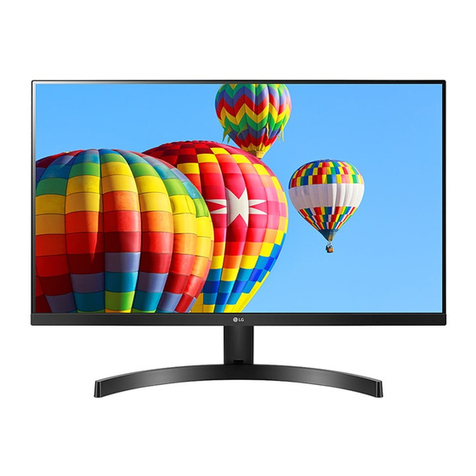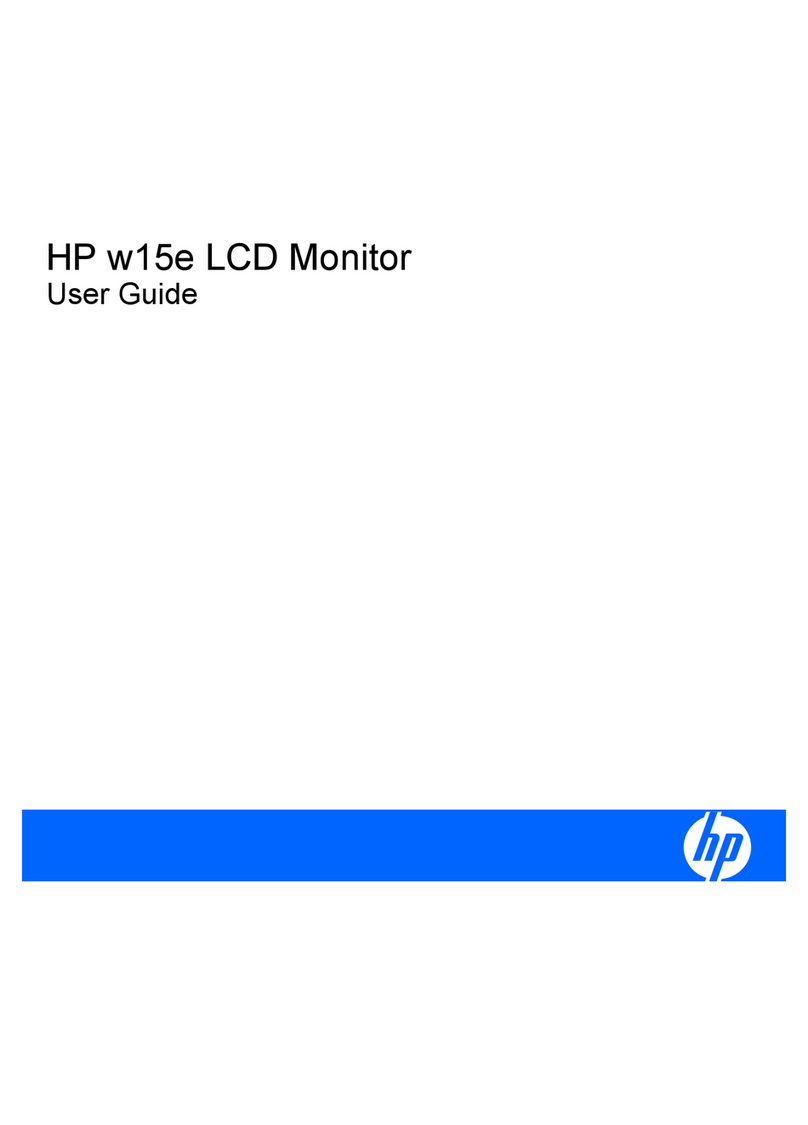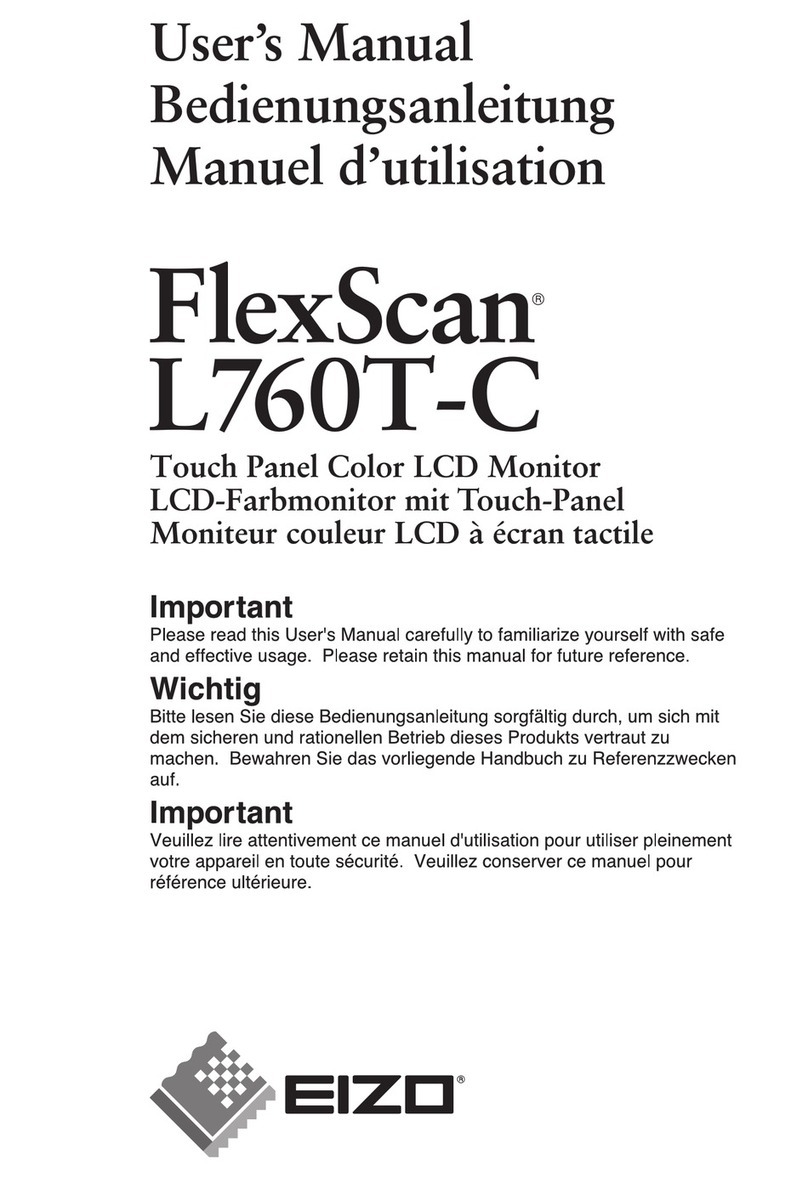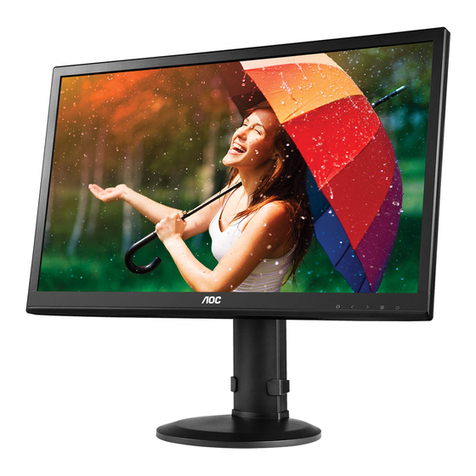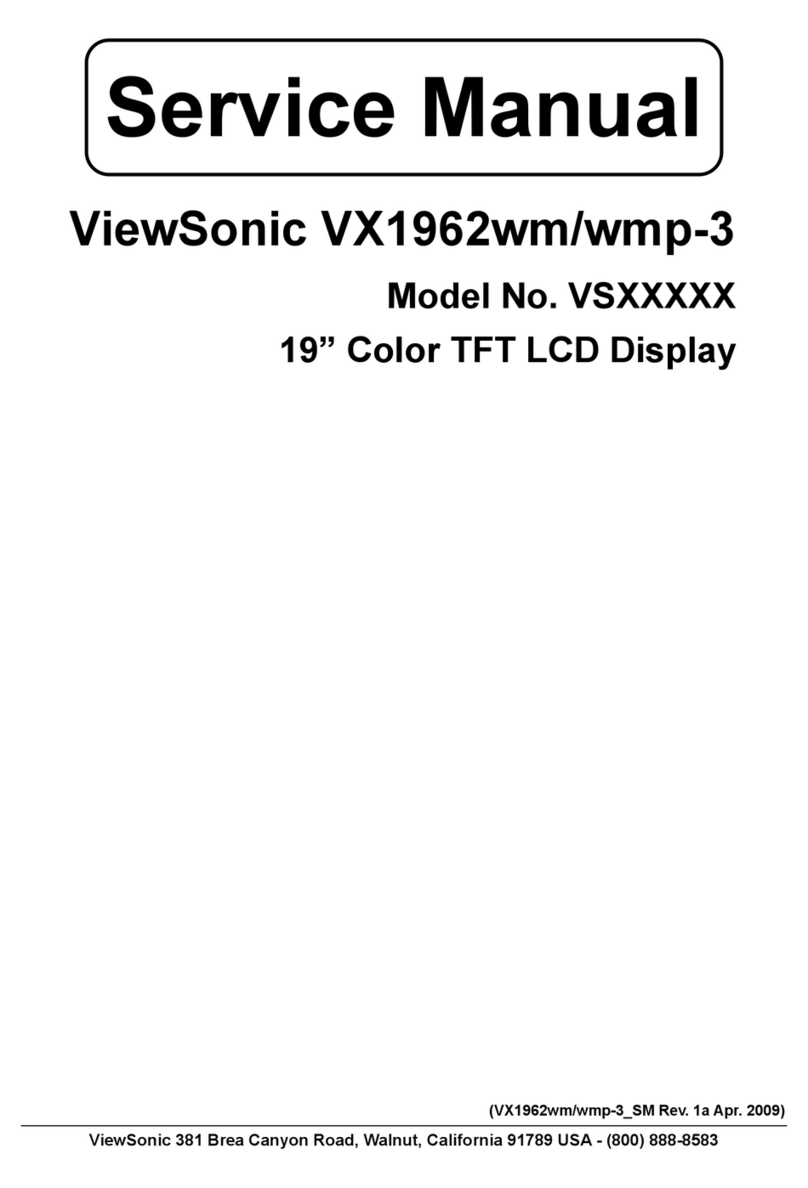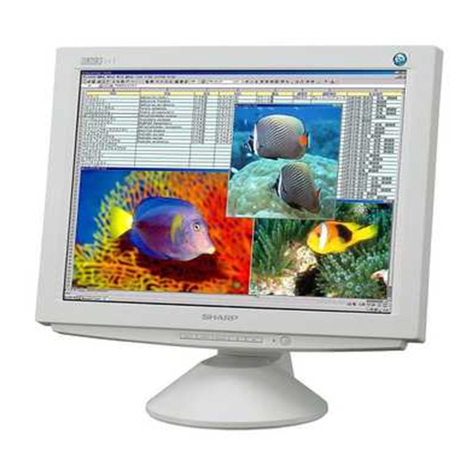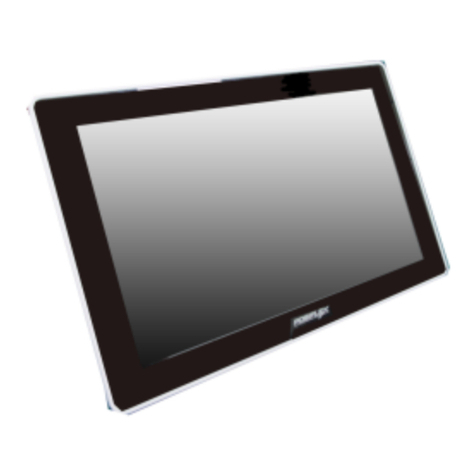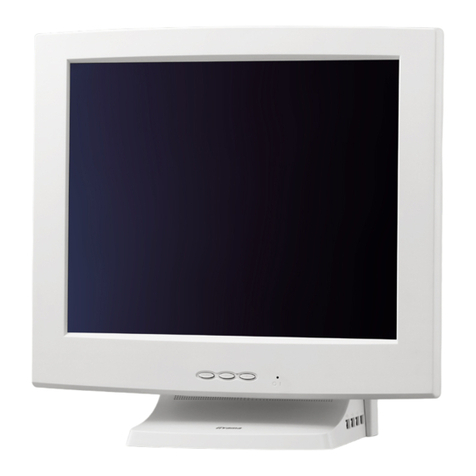Co2meter RAD-0012 User manual

Oxygen Monitor Operating Manual
Model: RAD-0012 Remote Oxygen Enrichment Safety System
1. Product Description
Thank you for selecting the RAD-0012 Remote Oxygen Enrichment Safety System.
This monitor is designed to detect oxygen enhancement in enclosed spaces and to
warn occupants of high oxygen levels. High concentrations of oxygen (O2) in
confined spaces may lead to fire hazards. This monitor has both audible and visual
alarms which activate when the O2 concentration is higher than the pre-set alarm
levels. Detection of high levels of O2 will also activate relays that can be used for a
fan or air-handling system to ventilate the confined space and improve O2
concentration in the area.
The RAD-0012 O2 Monitor is cost-effective and has many features including:
1. Separate SEU (Main Sensor Unit) and RDU (Remote Display Unit) allow you to
see warning before entering an enclosed area. Up to 3 RDUs can be used.
2. Large digital LCD display clearly indicates the ambient O2 concentration.
3. Relay outputs to control ventilation devices.
4. Audible and visual alarm indications at three separate alarm levels. Ability to
add strobes for additional indication.
5. Automatic barometric pressure compensation for high altitude use.
2. Package Contents & Description
The RAD-0012 package comprises the following parts:
SEU (Main Sensor Unit), RDU (Remote Display Unit), Power Supply (Pre-Wired),
CAT 5 Communication Cable (1 piece), Relay Cables (3 pieces),
Wall Plug Safety Strap (1 piece), Warning Signs, User Manual (1 piece)
Mounting Brackets (2 pieces), Screws (13 pieces), Wall Anchors (12 pieces)
Cable Clips (10 pieces), International Power Adaptor (3 pieces)
SEU (Main Sensor Unit)
A. O2 Sensor B. LCD display C. Power Green LED
D. Alarm 1 Red LED E. Alarm 2 Red LED F. Alarm 3 Red LED
G. Fault Yellow LED H. MODE Button I. UP Button
J. DOWN Button K. ENTER Button L. Alarm Buzzer
M. Reset Button N. 4-20mA Analog
Output
O. Battery Backup
Input
P. DC Power Supply Q. RDU Cable (RJ45) R. Relay 3 for AL3
S. Relay 2 for AL2 T. Relay 1 for AL1 U. Strobe Cable (RJ45)
V. Mount/Panel Holder
RDU (Remote Display Unit)
A. Power Green LED B. Alarm 1 Red LED C. Alarm 2 Red LED
D. Alarm 3 Red LED E. Fault Yellow LED F. LCD display
G. MODE Button H. UP Button I. DOWN Button
J. ENTER Button K. Alarm Buzzer L. Strobe Cable (RJ45)
M. Output Cable to
RDU (RJ45)
N. Input Cable from
SEU/RDU (RJ45) O. Panel Holder
3. LCD Display Symbol
Symbol Meaning Description
O2 Concentration
ppm (Parts Per
Million)
Ambient O2 Concentration
Alarm Alarm Icon
DIAG Diagnostics Test communications between the SEU and
RDU (see 10.3)
AL1 1st O2 Alarm
Level
A
larm 1 will trigger when O2 concentration is
above the first alarm level (default 23.0%).
AL1 (Red LED 1) and Fault LED will flash,
buzzer will sound, and Relay 1 will activate. If
there is strobe, the strobe will flash. This
status will remain latched. (see 9.1)
AL2 2nd O2 Alarm
Level
A
larm 2 will trigger when O2 concentration is
above the second alarm level (default 24.0%).
AL1, AL2, Fault LED will flash, buzzer will
sound and relay1 and relay2 will activate. If
there is strobe, the strobe will flash. This
status will remain latched. (see 9.1)
AL3 3rd O2 Alarm
Level
A
larm 3 will trigger when O2 concentration is
above the third alarm level (default 25.0%).
AL1, AL2, AL3, Fault LED will flash, buzzer will
sound and relay1, relay2, relay3 will activate.
If there is strobe, the strobe will flash. This
status will remain latched. (see 9.1)
CALI Calibration Icon
Displays when calibrating the O2 sensor to
adjust for long-term drift from the actual O2
concentration. (see 10.7)
RCFS Recover Factory
Settings
Reset To factory default settings, removes all
custom settings.
Hi High The O2 concentration is above 25%
Fan Icon
The fan will appear when alarm levels are
reached. Any device connected to the relays
will run.
4. SEU (Main Sensor Unit)
The SEU (Main Sensor Unit) houses the oxygen sensor, connections to the 3
alarm relays, a strobe (if used) and the connection to the RDU(s). Power for both
the SEU and RDU are supplied by the SEU. All setup functions and calibration are
performed from the SEU.
The SEU should be placed in a room where inert gases like Nitrogen, Argon, and
others are stored and oxygen depletion can occur. The large LCD displays the
ambient O2 concentration in real-time.
There are three separate O2 alarm levels: AL1, AL2 and AL3. All are preset to
OSHA standards but may be customized (see Section 10).
When the RAD-0012 Monitor detects an oxygen value above AL1, the Alarm 1 Red
LED and Yellow Fault LED will blink, Relay 1 will activate, an audible alarm will
sound, and the Strobe will activate if present. The alarm will continue until the
RESET button on the SEU is pressed unless the Latch Function is turned off (see
Section 9.2).
If the oxygen level continues to increase above AL2, the Alarm 1 Red LED, the
Alarm 2 Red LED, and Fault Yellow LED will blink, Relay 1 and Relay 2 will
activate and the audible alarm will sound, The Strobe will activate if present. The
alarm will continue until the RESET button on the SEU is pressed unless the Latch
Function is turned off (see Section 9.2).
If the oxygen level continues to increase above AL3, all 3 Alarm Red LEDs will
blink, all 3 relays will activate and the audible alarm will sound. The alarm will
continue until the RESET button on the SEU is pressed unless the Latch Function
isturnedoff(seeSection9.2).
5. RDU (Remote Display Unit)
The RDU should be placed outside the enclosed area (typically next to a door) to
warn users if the oxygen level inside the enclosed area have changed. The RDU is
controlled and powered by the SEU. A strobe may be attached to the RDU.
All visual and buzzer alarms on the SEU are duplicated on the RD. The SEU only
has the “DIAG” function to test the communication between the SEU and RDU
(see 10.3). All other functions or settings must be changed on the SEU.
6. Strobes
Strobes are add-on visible alarms. One strobe can be connected to the RDU and
one to the SEU. If the oxygen level goes below Alarm Level1, the strobes will flash.
The frequency of the flash cannot be changed.
7. Power
The RAD-0012 comes pre-wired with a 12V power supply that plugs in to a 120-
240VAC wall outlet. The 12V power supply can be removed and 24VDC can be
wired directly to the SEU through the terminal block. 24VAC must be converted to
24VDC for the monitor to operate.
8. Installation
1. Choose a suitable location near a wall outlet to install the SEU. Fix the panel
holder on the wall with the four screws provided.
2. Put the SEU on the panel holder, making sure that they are connected tightly.
3. Fix the second panel holder in a suitable location outside the monitored space
at eye level. Place the RDU onto the panel holder. Display warning signs next to
the RDU so they are not hidden when the door is open.
4. Route the included CAT5 cable between the SEU and RDU. CAT5 cable can be
run through the wall/conduit or fixed to the wall using cable clips. Plug the CAT5
cable into the designated ports on both units. 2 additional RDUs can be
connected to the first RDU as long as the total cable length between the farthest
RDU and SEU is less than 300ft. (91m).
5. The RAD-0012 has 3 relay outputs connected to the programmed alarm settings.
All relays are normally open/closed dry contacts. Any of the relays can be used
to control an external device (fan, HVAC system, etc.) or can be wired to the fire
alarm panel directly. The relays will trigger when the CO2 concentration exceeds
the programmed alarm level.
6. When the power has been connected, The SEU and the RDU will perform a self-
check, then begin to work. If the cable between the SEU & RDU is not securely
connected, the yellow fault LED on the SEU will blink after startup. If cable is
inserted into the wrong port on RDU, after about one minute, “Er7” will flash on
the RDU display. Securely plug the cable into the correct port on RDU for the
unit to function normally.
7. To test the system, use the DIAG function. The five LED’s will blink and the
buzzer will sound on both the SEU and RDU. Then both LCD screens will show
the same information. This verifies that alarm is ready.
Installation Example:
9. Advanced Management Settings
These settings use a non-obvious key combination to prevent casual users from
changing alarm settings. In most cases, the default settings are recommended.
9.1 Alarm Level Lock / Unlock: If the alarms are locked, an employee cannot
change the alarm levels. Factory default is locked. You must unlock the alarm
levels before you can change them (see Section 10).
1. Press Up & Enter buttons simultaneously for 10 se
c
onds until B
A
ro is displayed.
2. Press Mode button until Al n is displayed.
3. Press Up/Down arrow buttons to switch between Lock and Unlock.
4. Press Enter button to save and quit the advanced mode.
9.2 Latch Function On / Off: If the Latch function is on, alarms will continue until
the reset button is pressed even if the O2 level returns to normal. Factory default is
on.
1. Press Up & Enter buttons simultaneously for 10 se
c
onds until BAro is displayed.
2. Press Mode button until LAt is displayed.
3. Press Up/Down arrow buttons to switch between On and Of
f
.
4. Press Enter button to save and quit the advanced mode
9.3 Barometric Compensation On / Off: Turns on automatic compensation for
barometric pressure / altitude. Factory default is on.
1. Press Up & Enter buttons simultaneously for 10 se
c
onds until BAro is displayed.
2. Press Mode button until BAro is displayed.
3. Press Up / Down arrow buttons to switch On or Off.
4.Press Enter button to save and quit the advanced mode

10. Customizing the Settings
10.1 Select Temperature Units: Press the Up button to switch between ºF & ºC:
10.2 Select Barometric Units: Press the Down button to switch from hPa to inHg
10.3 Diagnostic Test: Test the communication link between the SEU & RDU.
1. Press Mode until the “DIAG” icon flashes
2. Press Enter. The five LED’s will blink and the buzzer will sound on the SEU and
RDU simultaneously.
10.4 Set AL1 Alarm Level: (only if Alarm level is unlocked - see 9.1)
1. Press Mode until the “O2” & “AL1” icons flash
2. Press Enter, the “AL1” icon shows on LCD. Default AL1 = 23.0%
3. Press Up/Down to go through
A
L1 levels: 21%, 21.5%, 22%, 22.5%, 23%,
23.5%, 24%, 24.5% and 25%
4. Press Enter to save or press Mode to exit without saving.
10.5 Set AL2 Alarm Level: (only if Alarm level is unlocked - see 9.1)
1. Press Mode until the “O2” “AL2” icon flashes
2. Press Enter, the “AL2” icon shows on LCD. Default AL2 = 24.0%
3. Press Up/Down to go through
A
L2 levels: 21%, 21.5%, 22%, 22.5%, 23%,
23.5%, 24%, 24.5% and 25%
4. Press Enter to save or press Mode to exit without saving.
10.6 Set AL3 Alarm Level: (only if alarm level is unlocked - see 9.1)
1. Press Mode until the “O2” “AL3” icon flashes
2. Press Enter, the “AL3” icon shows on LCD. Default AL3 = 25.0%
3. Press Up/Down to go through AL3 levels: 21%, 21.5%, 22%, 22.5%, 23%,
23.5%, 24%, 24.5% and 25%
4. Press Enter to save or press Mode to exit without saving.
Note: The 3 alarm levels cannot overlap.
10.7 Calibration:
Zero and Span Calibration should both be performed at least annually. They can
be performed onsite or the SEU can be returned for factory calibration. Check your
state or local code for calibration schedule requirements in your jurisdiction.
What you will need: a test gas cylinder of pure nitrogen (0% O2), a cylinder of 21%
oxygen, a regulator, tubing, and a small piece of masking tape to cover the buzzer
hole on the bottom right corner of the SEU. If you are calibrating in situ, first inform
occupants to ignore the alarms while calibration takes place.
Part 1: Zero Calibration:
1. Hold the tubing from the Nitrogen (0% O2) gas cylinder to the oxygen sensor
opening on the top right-hand corner of the SEU.
2. Open the gas regulator. Set the flow rate between 0.15-0.50 liters per minute.
3. Wait until the O2 reading on the SEU settles consistently at or near 0% O2 on
the screen. All alarms will be triggered.
4. Press the Mode button 5 times. The “O2” and “CALI” icons will flash.
5. Press Enter to view the calibration settings. The words “O2” and “ZEro” will
begin flashing on the LCD.
6. Press Enter again to begin calibrating. “CALIBRATING” will begin flashing.
7.
A
fter approximately 3 minutes, the LCD will display either “PASS” or “FAIL”
8. If the LCD reads “FAIL”, repeat the steps again. If it displays “PASS”, press
Enter. The display should now show 0%
9. Remove the nitrogen gas.
10. Press the Reset button at the bottom right-hand side of the SEU front cover.
Part 2: Span Calibration:
1. Hold the tubing from the 21% oxygen gas cylinder to the oxygen sensor
opening on the top right-hand corner of the SEU.
2. Open the gas regulator. Set the flow rate between 0.15-0.50 liters per minute.
3. Wait until the O2 reading on the SEU settles consistently at or near 21% O2 on
the screen.
4. Press the Mode button 5 times. The “O2” and “CALI” icons will flash.
5. Press Enter to view the calibration settings. The words “O2” and “ZEro” will
begin flashing on the LCD.
6. Press the Up or Down arrow key to change from “Zero” to “SPAn”.
7. Press Enter again to begin calibrating. “CALIBRATING” will begin flashing.
8.
A
fter approximately 3 minutes, the LCD will display either “PASS” or “FAIL”
9. If the LCD reads “FAIL”, repeat the steps again. If it displays “PASS”, press
Enter. The display should now show 21% O2.
10. Remove the oxygen gas.
11. Press the Reset button at the bottom right-hand side of the SEU front cover.
12. Remove tape over the alarm buzzer holes.
10.8 Recover Factory Settings:
If calibration or changing custom parameters has caused the RAD-0012 to behave
incorrectly, use the ReFactSet (Recover Factory Settings) function to return the
unit to its original condition at shipping.
1. Press Mode until the “ReFactSet” icon flashes.
2. Press Up/Down button to choose either “Yes” or “No”.
3. Press Enter to save or press Mode to exit without saving.
11. Product Care
To insure you receive the maximum benefit from using this product, please
observe the follow guidelines.
1. Repair - Do not attempt to repair the product or modify the circuitry by yourself.
Please contact CO2Meter directly if the product needs servicing, including the
replacement or calibration of sensor See section 15 for technical support
contact information.
2. Cleaning - Disconnect the power before cleaning. Use a damp cloth. Do not use
liquid cleaning agents such as benzene, thinner or aerosols, as these will
damage the device.
3. Maintenance – We recommend testing the communication between the SEU
and RDU under ‘DIAG” function. If these five LEDs blink and the buzzer of SEU
and RDU sound simultaneously, it indicates that SEU and RDU work normally.
12. Specifications
■Oxygen & Temperature Sensor Specifications:
Oxygen Sensor Specifications
Measurement Range 0 - 25% display
Display Resolution 0.1%
Accuracy Better than 2%FS
Pressure
Dependence
A
uto pressure compensation, built in barometer. (500
1200 mbar)
Response Time O2: <2min by 90%
O2 AL1
21%, 21.5%, 22%, 22.5%, 23%, 23.5%, 24%, 24.5% and
25%.
The default AL1 is 23.0%.
O2 AL2
21%, 21.5%, 22%, 22.5%, 23%, 23.5%, 24%, 24.5% and
25%.
The default AL2 is 24.0%
O2 AL3
21%, 21.5%, 22%, 22.5%, 23%, 23.5%, 24%, 24.5% and
25%.
The default AL3 is 25.0%.
Sound Alarm 80db@10cm
Warm-Up Time < 60 seconds at 72°F (22°C)
Temperature Sensor Specifications:
Temperature Range 32°F to 122°F (0°C to 50°C)
Display Resolution 0.1°F (0.1°C)
Display Options °F /°C
Accuracy ±2.7°F (±1.5°C) when O2 concentration is above first
alarm level
Response Time 20-30 minutes (case must equalize with environment)
Operating Conditions:
Operating
Temperature 32°F to 122°F (0°C to 50°C)
Humidity Range 0 ~ 95% RH non-condensing
Storage Conditions:
Storage Temperature -4°F to 140°F (-20°C to 60 °C)
■Power Supply
Power
Supply
DC 9~32VDC (12~32VDC recommended), 2A.
AC adapter Input: 100~240 VAC,50/60Hz, 0.6A
Output: 12VDC, 2000mA.
Battery Voltage 6VDC (5.4V~7.0V),
recommended capacity is 12AH
■Relay Outputs
Relays 1-3 Peak current for each relay < 2
A
@ 30VDC or 250VAC
Relay configuration: SPDT
■Weight and Dimensions
SEU Weight 1 lb.
Dimensions (LxWxD) 6.69 x 4.96 x 2.73 inches
RDU Weight 0.4 lb.
Dimensions (LxWxD) 5.51 x 3.54 x 1.89 inches
13. Safety Notes
Warning: Your safety is very important to us. To ensure to use the product correctly
and safety, please read these warnings and the entire User Manual before using the
product. Otherwise, the protection provided by the equipment may be impaired.
These warnings provide important safety information and should be observed at all
times.
1. Please handle the device carefully; do not subject the product to impact or
shock. Otherwise, this may cause the accuracy drift.
2. Do not place the unit near a heat source. Heat can cause distortion of the unit,
which may result in an explosion or fire.
3. Do not touch the exposed electronic circuitry of the device under any
circumstances, as there is the dangerous of electric shocks.
4. Please take care of cable connection between SEU and RDU. Make sure the
cable from SEU is connected into the INPUT port of RDU.
5. Please ensure the external power supply is normally supplied to ventilation fan
while the relay is working. If there has no normally power supply to the fan, the
relay will not work, which may result in potential danger with lower O2
concentration in confined space.
14. Fault Codes &Troubleshooting Guide
This section includes a list of Frequently Asked Questions for problems you may
encounter with the RAD-0012 O2 Monitor.
No
LCD
Fault
Icon
Description
(of the fault)
SEU
Indication
RDU
Indication Suggested Actions
1 Er3
The ambient
temperature has
exceeded the
temperature range
32°F to 122°F
(0°C to 50°C)
“Er3” flash,
Fault LED
blink
“Er3” flash,
Fault LED
blink
This error will
disappear when the
temperature returns to
the range between
32°F to 122°F (0°C
and 50°C)
2 Er5
EEPROM System
Problem
“Er5” flash,
Fault LED
blink
“Er5” flash,
Fault LED
blink
Power on again or
press reset button, if
the “Er5” always
appear, please contact
with the local dealer.
3 Er7
Internal Data
Transmission Error
“Er7” flash,
Fault LED
blink,
“Er7” flash,
Fault LED
Blink
Check the RJ45 plug is
connected into the
INPUT port of RDU, if
the “Er7” displays on
the RDU only.
Press reset button on
SEU or power on
again
15. Support & Warranty
Contact us: We’re here to help!
If the troubleshooting guide above doesn’t help you solving your problem or for more
information, please contact us using the information below.
(386) 256-4910 (M-F 9:00am–5:00pm EST)
www.CO2Meter.com
CO2Meter, Inc.
131 Business Center Drive
Ormond Beach, FL 32174
Phone: 386-872-7665 | Fax: 866-422-2356
Ref. No.:122016
Other Co2meter Monitor manuals
